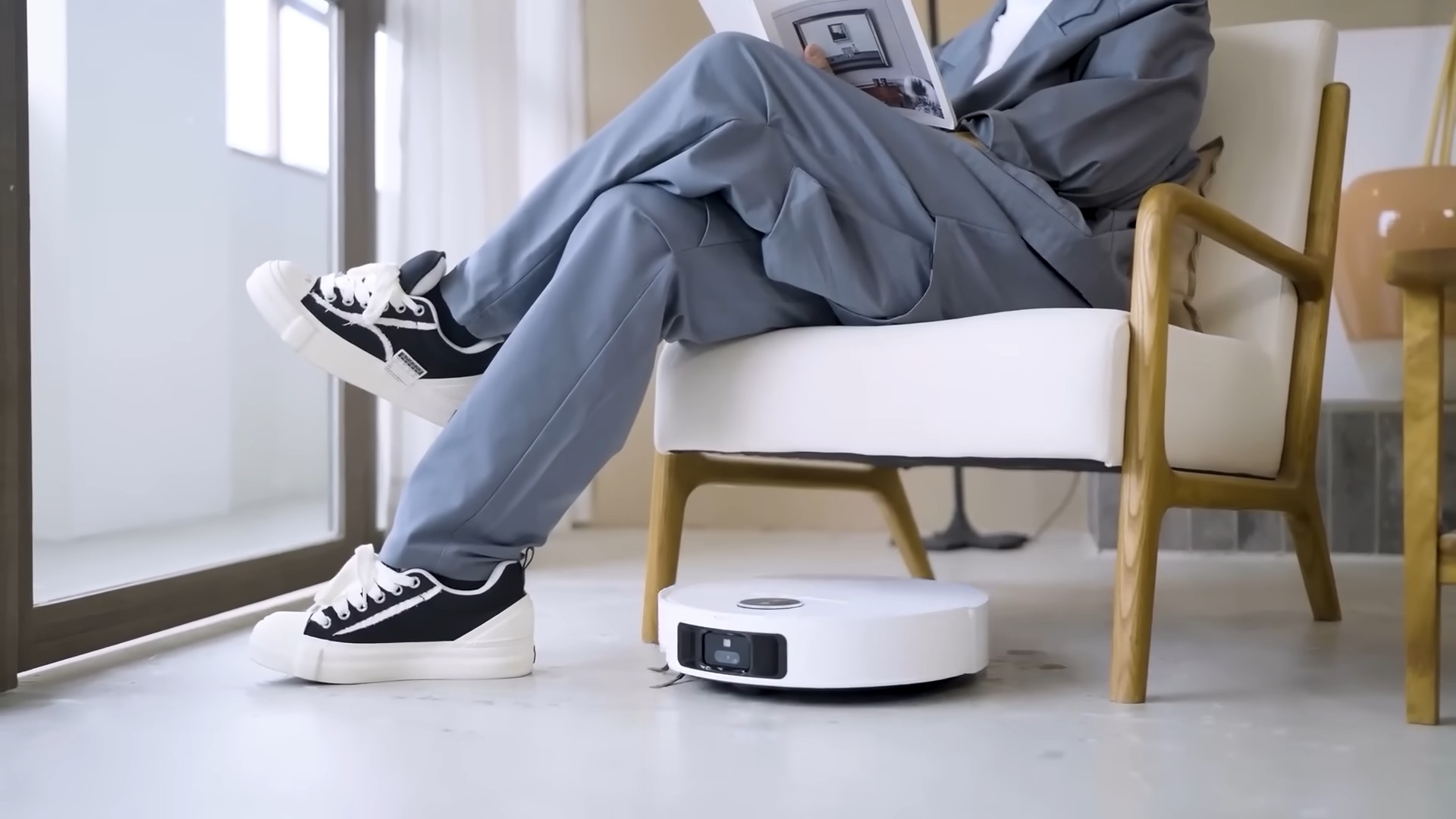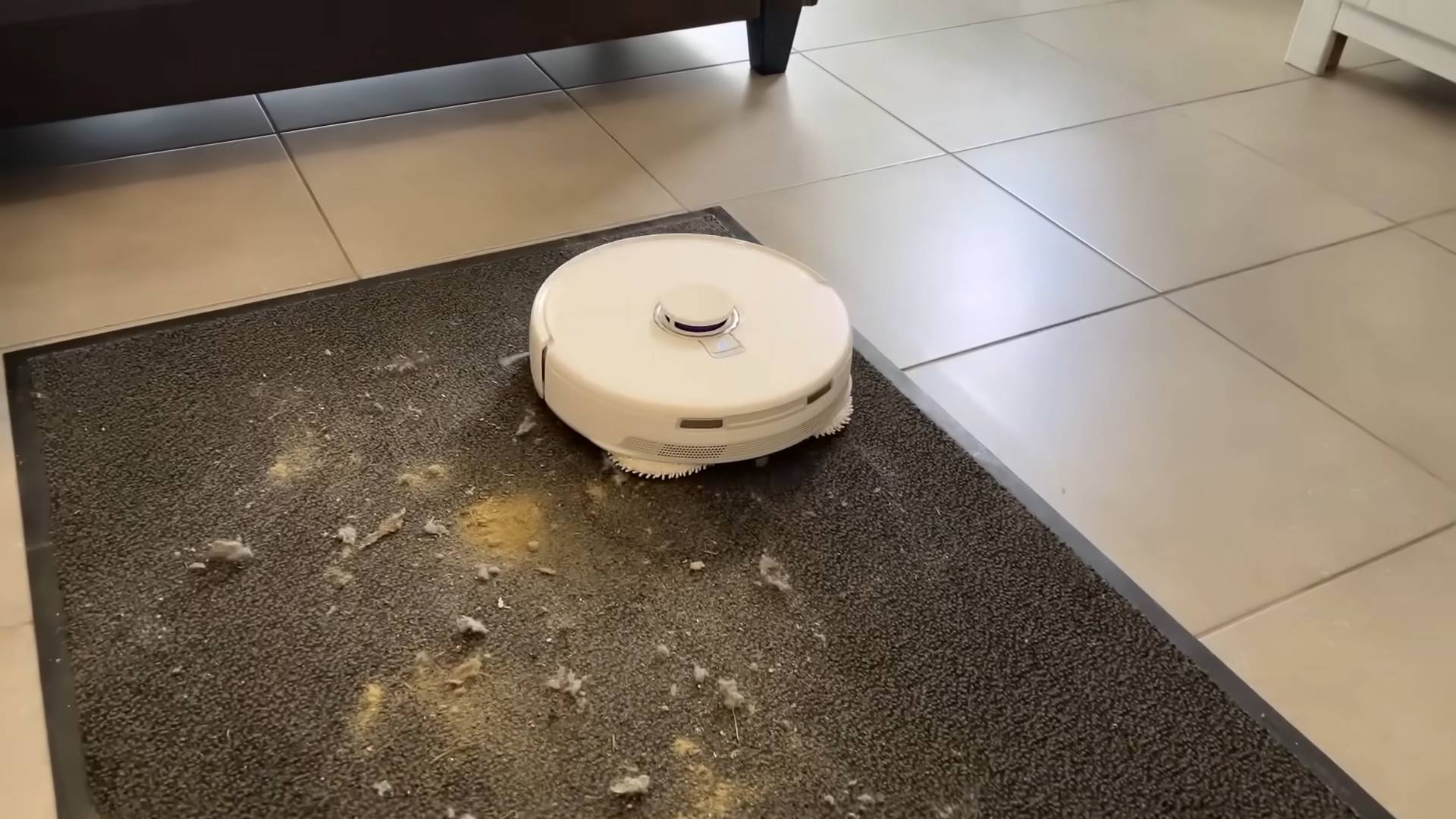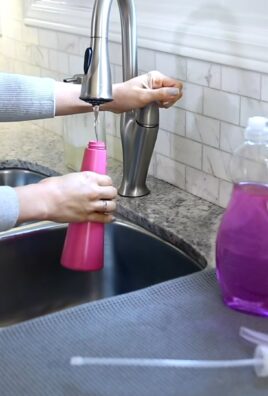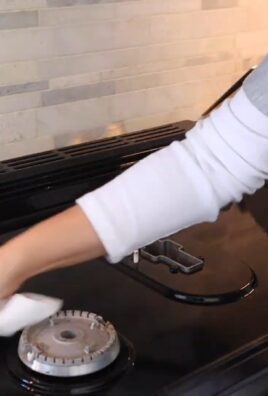Time for cleaning busy schedule can feel like an impossible task, right? I totally get it! Between work, family, and everything else life throws our way, the thought of tackling a messy house can be completely overwhelming. But what if I told you there are simple, DIY tricks and hacks that can help you conquer the chaos, even with the busiest schedule?
For centuries, cultures around the world have developed clever cleaning methods passed down through generations. From ancient Roman bathhouses meticulously maintained to the minimalist cleaning rituals of Japanese Zen gardens, the desire for a clean and organized space is deeply ingrained in human history. It’s not just about aesthetics; it’s about creating a healthy and peaceful environment where we can thrive.
That’s why I’m so excited to share these time-saving cleaning hacks with you. We all deserve to come home to a space that feels calm and inviting, not stressful and cluttered. These DIY solutions are designed to fit seamlessly into even the most hectic lifestyles, helping you reclaim your weekends and enjoy more quality time doing the things you love. So, let’s dive in and discover how to make time for cleaning busy schedule a breeze!

DIY Time Management Hacks for a Busy Schedule: Reclaim Your Day!
Hey there, fellow busy bee! Feeling overwhelmed by your packed schedule? I totally get it. Juggling work, family, hobbies, and everything else life throws at us can feel like a never-ending circus act. But don’t worry, I’m here to share some of my favorite DIY time management hacks that have helped me reclaim my day and feel more in control. These aren’t just generic tips; they’re practical strategies you can implement right away to boost your productivity and reduce stress. Let’s dive in!
Understanding Your Time Thieves
Before we start implementing new strategies, it’s crucial to understand where your time is actually going. You might be surprised!
* Track Your Time: For a week, meticulously track how you spend your time. Use a notebook, a spreadsheet, or a time-tracking app. Be honest with yourself! Include everything, even those “quick” social media checks.
* Identify Time Wasters: At the end of the week, analyze your time log. What activities are eating up the most time? Are there any recurring distractions or unproductive habits? Common culprits include excessive social media use, aimless browsing, and unnecessary meetings.
* Categorize Your Tasks: Group your tasks into categories like “Work,” “Family,” “Personal,” and “Errands.” This will give you a clearer picture of your priorities and where you need to allocate more or less time.
Prioritizing Like a Pro
Now that you know where your time is going, it’s time to prioritize what’s truly important.
* The Eisenhower Matrix (Urgent/Important): This is a game-changer! Divide your tasks into four quadrants:
* Urgent and Important: These are tasks that need immediate attention and contribute to your long-term goals. Do these first!
* Important but Not Urgent: These are tasks that contribute to your long-term goals but don’t require immediate action. Schedule these into your calendar.
* Urgent but Not Important: These are tasks that demand your attention but don’t contribute to your long-term goals. Delegate these if possible, or minimize them.
* Not Urgent and Not Important: These are time-wasters that you should eliminate or minimize as much as possible.
* The Pareto Principle (80/20 Rule): This principle states that 80% of your results come from 20% of your efforts. Identify the 20% of your tasks that yield the most significant results and focus on those.
* Set Realistic Goals: Don’t try to do everything at once. Start with a few achievable goals and gradually increase your workload as you become more efficient.
Creating a Time-Blocking Schedule
Time-blocking is a powerful technique that involves scheduling specific blocks of time for specific tasks. It helps you stay focused and avoid distractions.
* Choose Your Tool: You can use a paper planner, a digital calendar (like Google Calendar or Outlook Calendar), or a dedicated time-blocking app.
* Allocate Time Blocks: Based on your priorities, allocate specific time blocks for each task or activity. Be realistic about how long each task will take.
* Schedule Breaks: Don’t forget to schedule regular breaks throughout the day. Short breaks can actually boost your productivity and prevent burnout.
* Be Flexible: Life happens! Don’t be afraid to adjust your schedule as needed. The key is to have a plan, but be willing to adapt.
Step-by-Step Instructions for Time-Blocking:
1. Start with the Essentials: Block out time for sleep, meals, and other essential activities. These are non-negotiable!
2. Schedule Your Most Important Tasks: Identify the tasks that are most important to your goals and schedule them during your peak energy hours. For me, that’s usually in the morning.
3. Batch Similar Tasks: Group similar tasks together to minimize context switching. For example, schedule all your email responses at the same time.
4. Schedule Buffer Time: Leave some buffer time between tasks to account for unexpected delays or interruptions. This will help you stay on track even when things don’t go according to plan.
5. Review and Adjust: At the end of each day, review your schedule and make adjustments for the next day. What worked well? What didn’t? What can you improve?
Eliminating Distractions and Staying Focused
Distractions are the enemy of productivity. Here’s how to combat them:
* Minimize Notifications: Turn off notifications on your phone and computer. Only check email and social media at designated times.
* Create a Dedicated Workspace: Designate a specific area for work or study. This will help you mentally associate that space with productivity.
* Use Website Blockers: Use website blockers to prevent yourself from visiting distracting websites during work hours.
* Communicate Your Boundaries: Let your family and colleagues know when you need uninterrupted time to focus.
* The Pomodoro Technique: Work in focused bursts of 25 minutes, followed by a 5-minute break. After four “pomodoros,” take a longer break of 20-30 minutes. This technique can help you stay focused and avoid burnout.
Step-by-Step Instructions for the Pomodoro Technique:
1. Choose a Task: Select a task you want to focus on.
2. Set a Timer for 25 Minutes: Use a timer or a Pomodoro app.
3. Work on the Task: Focus solely on the task for 25 minutes. Avoid distractions.
4. Take a 5-Minute Break: When the timer goes off, take a 5-minute break. Get up, stretch, or do something relaxing.
5. Repeat Steps 2-4: Repeat the cycle four times.
6. Take a Longer Break: After four pomodoros, take a longer break of 20-30 minutes.
Delegating and Outsourcing
You don’t have to do everything yourself! Delegating and outsourcing can free up your time for more important tasks.
* Identify Delegatable Tasks: Identify tasks that can be delegated to others, such as administrative tasks, errands, or household chores.
* Delegate to Family Members: If you have children, assign them age-appropriate chores.
* Hire a Virtual Assistant: Consider hiring a virtual assistant to handle administrative tasks, scheduling, or social media management.
* Outsource Tasks: Outsource tasks like cleaning, lawn care, or home repairs to professionals.
Batching Similar Tasks
Batching involves grouping similar tasks together and completing them all at once. This can save you time and energy by minimizing context switching.
* Email Batching: Check and respond to emails at designated times, rather than constantly throughout the day.
* Errand Batching: Group errands together and run them all at once.
* Meal Prep Batching: Prepare meals in advance for the week.
* Social Media Batching: Schedule social media posts in advance.
Utilizing Technology Wisely
Technology can be a powerful tool for time management, but it can also be a major distraction. Here’s how to use technology wisely:
* Use a Calendar App: Use a calendar app to schedule appointments, set reminders, and track deadlines.
* Use a Task Management App: Use a task management app to create to-do lists, prioritize tasks, and track progress.
* Use a Note-Taking App: Use a note-taking app to capture ideas, take notes, and organize information.
* Automate Repetitive Tasks: Use automation tools to automate repetitive tasks, such as email marketing or social media posting.
Saying “No” Gracefully
Learning to say “no” is essential for protecting your time and energy.
* Be Polite but Firm: Politely decline requests that don’t align with your priorities.
* Offer Alternatives: If possible, offer alternatives or suggest someone else who might be able to help.
* Don’t Over-Explain: You don’t need to provide a lengthy explanation for saying “no.” A simple “I’m not able to commit to that right now” is sufficient.
* Prioritize Your Well-being: Remember that saying “no” is an act of self-care.
Reviewing and Adjusting Your System
Time management is an ongoing process. It’s important to regularly review your system and make adjustments as needed.
* Weekly Review: At the end of each week, review your schedule, your priorities, and your progress. What worked well? What didn’t? What can you improve?
* Monthly Review: At the end of each month, review your long-term goals and make sure your time management system is aligned with those goals.
*

Conclusion
In today’s fast-paced world, finding time for deep cleaning can feel like an impossible feat. Between work, family, and social commitments, dedicating hours to scrubbing and polishing often falls to the bottom of the priority list. That’s precisely why this DIY cleaning trick is an absolute must-try for anyone struggling to maintain a sparkling home amidst a busy schedule. It’s not just about cleaning; it’s about reclaiming your time and energy.
This method offers a streamlined, efficient approach to tackling grime and dirt, allowing you to achieve impressive results with minimal effort. The beauty of this DIY solution lies in its simplicity and accessibility. You likely already have most, if not all, of the necessary ingredients in your pantry or cleaning cabinet. No need for expensive, specialized products or complicated procedures. This is cleaning made easy, effective, and economical.
But the benefits extend beyond mere convenience. By creating your own cleaning solution, you have complete control over the ingredients, ensuring a safer, healthier environment for you and your family. You can avoid harsh chemicals, artificial fragrances, and other potentially harmful substances commonly found in commercial cleaners. This is particularly important for households with children, pets, or individuals with sensitivities.
Ready to take your cleaning game to the next level?
Consider these variations to tailor the DIY solution to your specific needs and preferences:
* For extra disinfecting power: Add a few drops of tea tree oil or eucalyptus oil to the mixture. These essential oils possess natural antibacterial and antiviral properties.
* For a refreshing scent: Infuse the solution with citrus peels (lemon, orange, or grapefruit) for a natural, uplifting fragrance. Simply add the peels to the mixture and let them steep for a few days before straining.
* For stubborn stains: Create a paste by mixing the solution with baking soda and apply it directly to the stain. Let it sit for a few minutes before scrubbing gently.
* For delicate surfaces: Dilute the solution with more water to prevent damage to sensitive materials like wood or marble.
We are confident that this DIY cleaning trick will revolutionize your cleaning routine, saving you time, money, and stress. It’s a game-changer for busy individuals and families who want to maintain a clean and healthy home without sacrificing their precious free time.
So, what are you waiting for? Give this DIY cleaning trick a try and experience the difference for yourself. We encourage you to experiment with different variations and find what works best for your home and lifestyle.
Don’t forget to share your experiences with us! We’d love to hear your tips, tricks, and success stories in the comments below. Let’s create a community of empowered cleaners who are taking control of their homes and their time. Your feedback will not only inspire others but also help us refine and improve this DIY cleaning solution for everyone. Let’s make cleaning less of a chore and more of a manageable, even enjoyable, part of our busy lives. Embrace the power of DIY and unlock a cleaner, healthier, and more efficient home today!
Frequently Asked Questions (FAQ)
What types of surfaces can I use this DIY cleaning solution on?
This DIY cleaning solution is generally safe for a wide range of surfaces, including countertops, sinks, tiles, floors (except unsealed wood), appliances, and bathroom fixtures. However, it’s always a good idea to test the solution on a small, inconspicuous area first to ensure it doesn’t cause any discoloration or damage, especially on delicate or sensitive materials like wood, marble, or painted surfaces. Avoid using it on electronics or surfaces that are not water-resistant. When in doubt, dilute the solution with more water or consult the manufacturer’s instructions for the specific surface you’re cleaning.
How often should I use this DIY cleaning solution?
The frequency of use depends on your cleaning needs and the level of dirt and grime in your home. For general cleaning, you can use this solution as often as needed, perhaps once or twice a week. For areas that require more frequent cleaning, such as kitchen countertops or bathroom sinks, you can use it daily. However, avoid over-cleaning, as it can strip away natural oils and damage surfaces over time. Adjust the frequency based on your individual circumstances and observe how your surfaces respond to the solution.
Can I store the leftover DIY cleaning solution?
Yes, you can store the leftover DIY cleaning solution in a clean, airtight container. It’s best to store it in a cool, dark place away from direct sunlight and heat. Properly stored, the solution should remain effective for several weeks. However, it’s always a good idea to check the solution for any signs of spoilage, such as discoloration or a foul odor, before using it. If you notice any changes, discard the solution and make a fresh batch. Label the container clearly with the date it was made to keep track of its freshness.
Is this DIY cleaning solution safe for pets and children?
While this DIY cleaning solution is generally safer than commercial cleaners containing harsh chemicals, it’s still important to exercise caution when using it around pets and children. Keep the solution out of their reach and supervise them closely during cleaning. Avoid spraying the solution directly on pets or allowing them to ingest it. If you’re concerned about potential sensitivities, consider using a milder version of the solution with diluted ingredients. Always rinse surfaces thoroughly after cleaning to remove any residue. If your pet or child accidentally ingests the solution, contact a veterinarian or poison control center immediately.
Can I use different essential oils in this DIY cleaning solution?
Yes, you can experiment with different essential oils to customize the scent and enhance the cleaning properties of the solution. Popular choices include lavender, lemon, peppermint, tea tree, and eucalyptus. Each essential oil has its own unique fragrance and benefits. For example, lavender has a calming scent, while lemon has a refreshing and uplifting aroma. Tea tree oil is known for its antibacterial and antifungal properties. When using essential oils, start with a small amount (a few drops) and adjust to your preference. Be sure to use high-quality, pure essential oils for the best results. Also, be aware of any potential allergies or sensitivities to specific essential oils before using them.
How does this DIY cleaning trick save time for busy schedules?
This DIY cleaning trick saves time in several ways. First, it eliminates the need to run to the store to purchase specialized cleaning products. You likely already have the necessary ingredients on hand, saving you a trip and valuable time. Second, the solution is quick and easy to prepare, requiring minimal effort and time investment. Third, the cleaning process itself is streamlined and efficient, allowing you to tackle dirt and grime quickly and effectively. Finally, by using a safe and natural cleaning solution, you can avoid the need for harsh chemicals and prolonged scrubbing, further reducing your cleaning time. The overall result is a more efficient and manageable cleaning routine that fits seamlessly into your busy schedule.





Leave a Comment